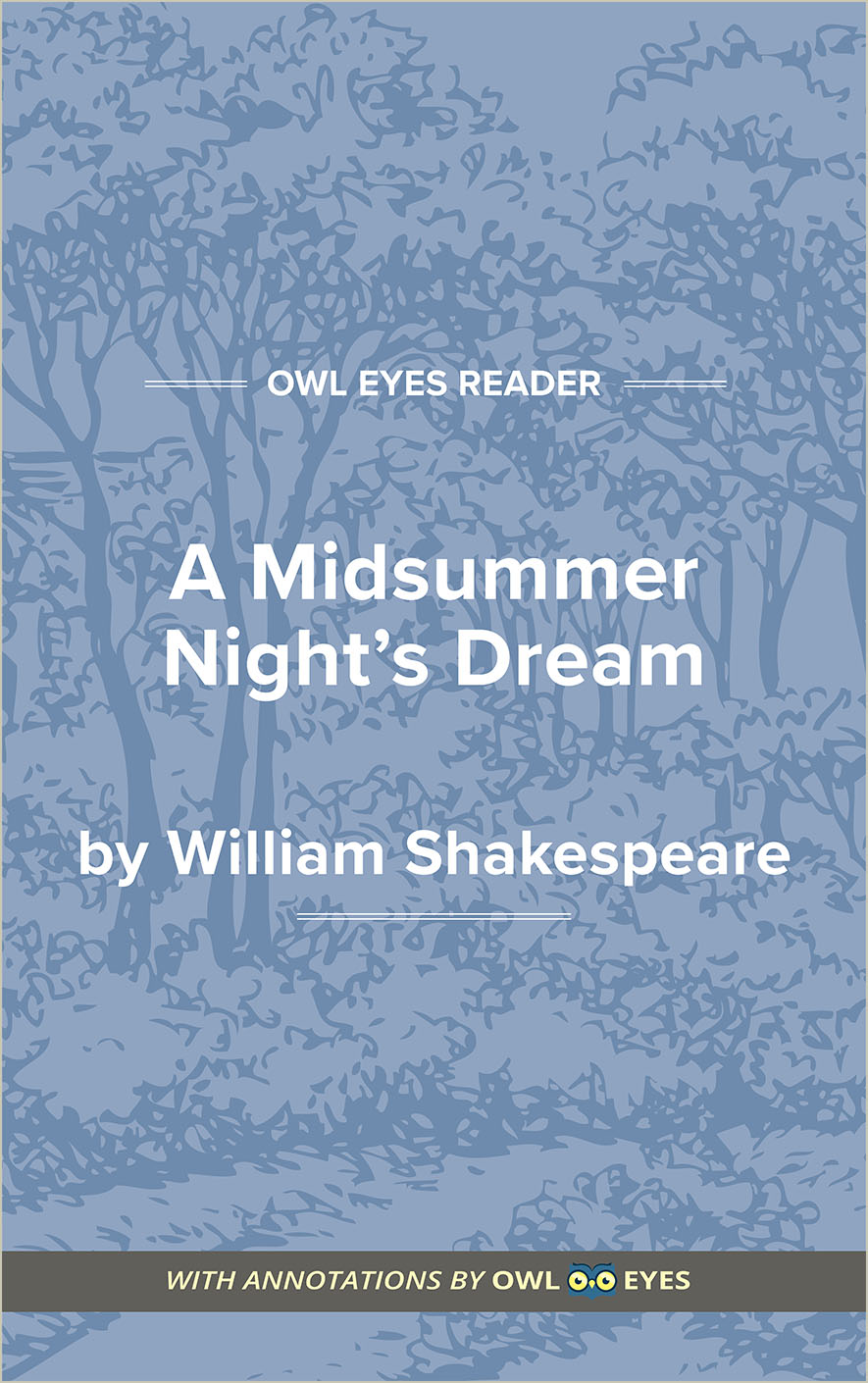Analysis Pages
Imagery in A Midsummer Night's Dream
Imagery is a literary device in which an author describes something using an appeal to the senses (sight, smell, etc.). One of the most obvious examples of imagery in A Midsummer Night’s Dream is Shakespeare’s descriptions of the forest. He invokes our senses to make the forest seem hypnotizing like a magical spell, in comparison to the city.
Imagery Examples in A Midsummer Night's Dream:
Act II - Scene I
🔒"I know a bank where the wild thyme blows, Where oxlips and the nodding violet grows,(255) Quite over-canopied with luscious woodbine, With sweet musk-roses, and with eglantine; There sleeps Titania sometime of the night, Lull'd in these flowers with dances and delight; And there the snake throws her enamell'd skin,(260) Weed wide enough to wrap a fairy in;..." See in text (Act II - Scene I)

